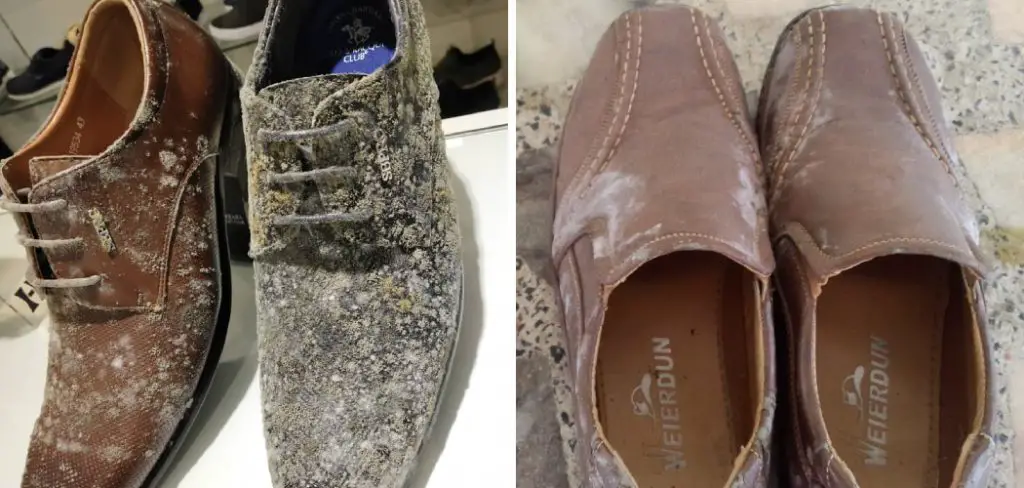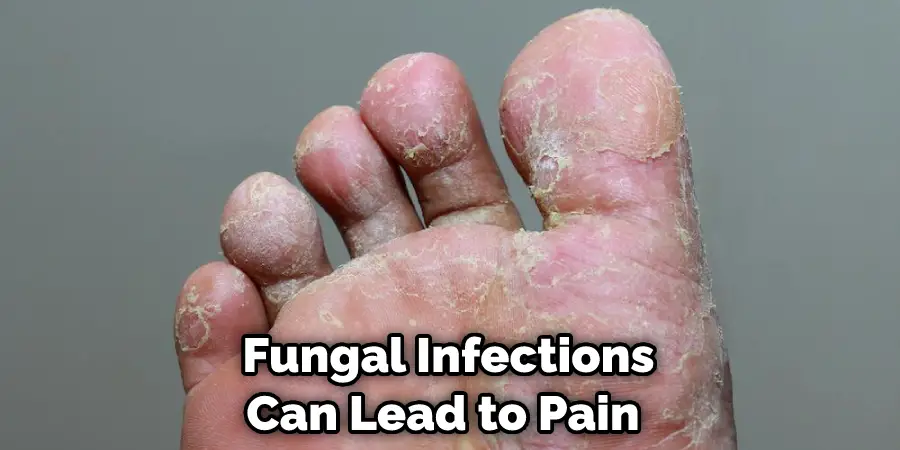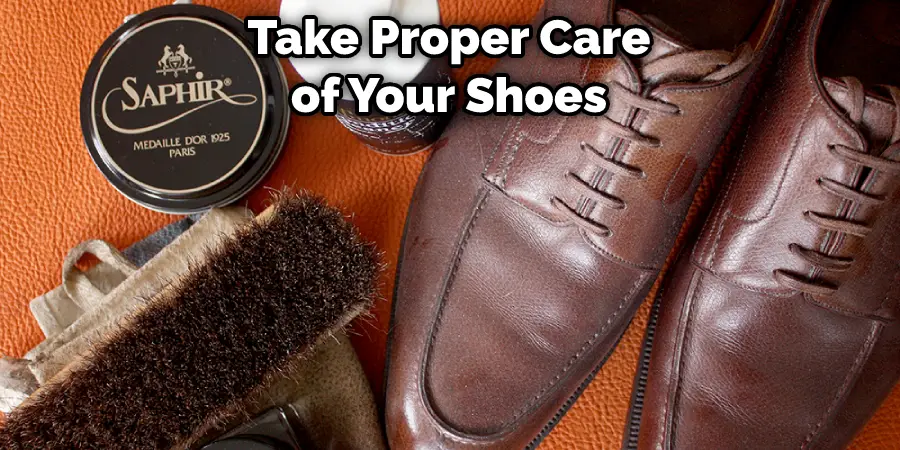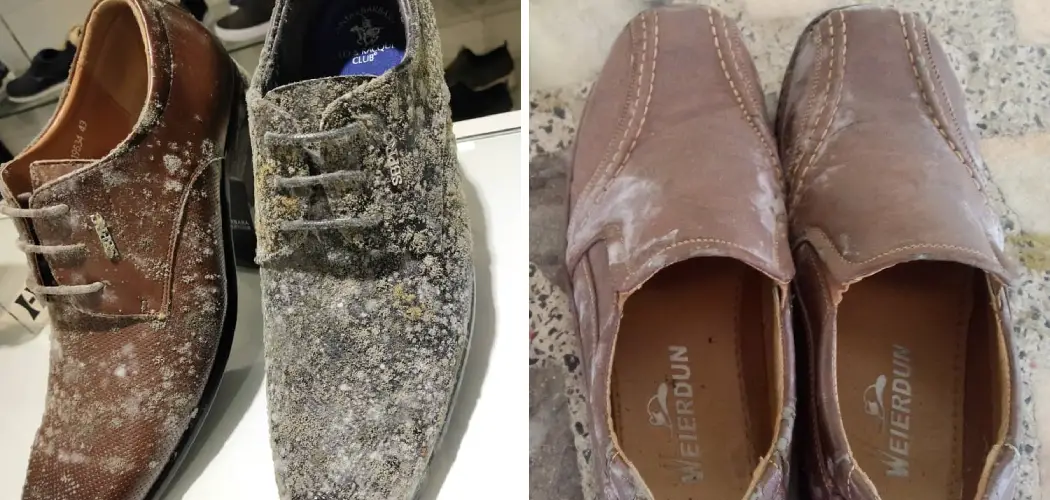You may be surprised to learn that fungus can grow on your shoes. In fact, it’s not uncommon for fungal infections to develop on the feet, especially in hot and humid weather. If you have a fungal infection on your feet, it’s important to take steps to disinfect your shoes so that the infection doesn’t spread.

If you have ever had a fungal infection, you know how frustrating it can be to get rid of. Shoes are a common place for fungus to grow, especially in the summertime. Here are a few easy ways how to disinfect shoes from fungus. Whether you are dealing with an existing infection or want to prevent one from happening, these methods will help!
Summary: To disinfect shoes from fungus, there are a few simple steps that you can follow. First, clean your shoes thoroughly with soap and water. Then, use a disinfectant spray or wipes to kill any remaining fungus spores. You can also use essential oils, such as tea tree oil, to help prevent the growth of fungus.
What Will Happen if Fungus Infects Shoes?
1. Skin Irritation
This is one of the most common reactions to fungus on the skin, particularly if it’s a fungal infection such as an athlete’s foot. It can cause redness, itchiness, and even blisters. So if fungus infects your shoes, it can easily spread onto your feet and lead to irritation.
2. Fungal Nail Infections
The fungus can also infect the nails, causing discoloration, thickening, and crumbling of the nail. Wearing contaminated shoes increases your risk of developing a fungal nail infection. So if you do not want to deal with these unpleasant symptoms, it’s important to disinfect your shoes from fungus.
3. Spread of Fungus
Not only can fungus infect you and your feet, but it can also spread to others. If someone borrows or wears your contaminated shoes, they may develop an infection as well. Thus, it’s important to not only protect yourself but also prevent the spread of the fungus to others.
4. Discomfort
Not only can fungus lead to physical discomfort, but it can also cause mental discomfort. Having an infected shoe or foot can be embarrassing and lower self-esteem. It’s important to take the necessary steps to disinfect your shoes to avoid these negative effects.
5. Pain
In severe cases, fungal infections can lead to pain. This is especially true for nail fungus, as the nails may become thick and painful to walk on. Again, it’s important to take the necessary precautions and disinfect your shoes from fungus in order to prevent this outcome.

How to Disinfect Shoes From Fungus in 5 Easy Steps
Step 1: Remove the Insoles and Laces
Take out any removable insoles or laces before cleaning to ensure that the entire surface area of the shoe can be disinfected. Make sure to wash the insoles and laces separately in hot water with detergent. Also, be careful not to damage the shoes while removing these items.
Step 2: Use a Soft Brush or Cloth to Remove Dirt and Debris
Gently brush off any dirt and debris that may be on the surface of the shoe. Pay special attention to crevices and seams where fungus can easily hide. You have to be careful not to damage the material of the shoe while brushing.
Step 3: Mix a Solution of Water and Disinfectant
Mix water and a disinfectant, such as bleach or Lysol, in a spray bottle according to the product’s instructions. Make sure to wear gloves and work in a well-ventilated area when using these products.
Step 3: Disinfect with White Vinegar
If you want to use a more natural alternative, white vinegar can also be effective at killing fungus. Mix equal parts water and white vinegar in a spray bottle and spray onto the shoes. Let sit for 10 minutes before wiping off with a clean cloth.
Step 4: Air Dry Completely
Make sure to thoroughly dry the shoes before wearing them again. You can use a hairdryer or leave them in a well-ventilated area to air dry. So make sure to dry them before putting them back on or storing them away.
Step 5: Use Antifungal Spray or Powder
To prevent the fungus from returning, use an antifungal spray or powder on the inside and outside of the shoes after they have been thoroughly cleaned and dried. But you have to make sure to follow the directions on the product for proper usage.
Some Additional Tips to Disinfect Shoes From Fungus
1. Use Tea Tree Oil as a Natural Disinfectant
Mix several drops of tea tree oil with water in a spray bottle and spray onto the affected areas of the shoes. Let sit for a few minutes before wiping off with a clean cloth or sponge. It will also help to prevent future fungus growth.

2. Wash Shoes in Hot Water
If possible, wash your shoes in hot water with laundry detergent to remove any dirt and debris that may be contributing to the fungus growth. Also, make sure to dry them thoroughly before wearing them again.
3. Use Baking Soda
Sprinkle baking soda onto the affected areas of the shoes and let sit for a few hours before brushing off and wiping clean with a damp cloth. Baking soda can also help absorb any odors caused by fungus growth.
4. Try an Antifungal Spray or Powder
There are many products available specifically for treating fungus on shoes. Follow the instructions on the product and reapply as necessary. It will also help to prevent future fungus growth. But make sure to properly ventilate the area and avoid inhaling the spray or powder.
5. Let Your Shoes Air Out
Make sure to let your shoes air out between wearing them, especially if they tend to get damp or sweaty. This will reduce the chance of fungus growth. It can also help to sprinkle a little baking soda inside the shoes before wearing them to absorb moisture and odor.
6. Keep Your Feet Clean and Dry
Proper foot hygiene, including washing and thoroughly drying your feet daily, can also prevent fungus growth on your shoes. Fungus thrives in damp environments, so keeping your feet clean and dry can also prevent the spread of the fungus to your shoes.
7. Replace Old or Damaged Shoes
If your shoes are old or have damage that cannot be properly cleaned and disinfected, it may be time to invest in a new pair. This will reduce the chance of re-infection and the spread of the fungus to other shoes or surfaces.
Remember to take proper care of your shoes and practice good hygiene to prevent the growth and spread of the fungus.

Frequently Asked Question
How Do I Know if My Shoes Have a Fungus?
First, inspect your shoes for any visible mold or mildew growth. You may also notice a musty odor coming from the shoes. If either of these signs is present, it is likely that your shoes have a fungus. But make sure to clean and disinfect any shoes that may have come in contact with a fungus, even if there are no visible signs.
How Can I Prevent Fungus From Growing in My Shoes?
To prevent fungus growth in your shoes, make sure to clean and dry them thoroughly after each use. In damp environments, consider using an antifungal spray on your shoes before and after wearing them. To prevent spreading fungus from one pair of shoes to another, do not wear the same pair two days in a row, allowing them time to fully air out and dry. Additionally, avoid sharing shoes with others.
How Long Can Fungus Live in Shoes?
The fungus can live and thrive in moist environments, such as wet or damp shoes. As long as conditions are favorable, the fungus can continue to grow and spread. Therefore, it is important to regularly clean and dry your shoes to prevent the growth and spread of the fungus.
Can I Spray Antifungal on My Shoes?
Yes, there are specifically designed antifungal sprays for shoes. Follow the instructions on the product and make sure to properly ventilate the area while applying. Reapply as necessary to prevent future fungus growth.

Can Fungus Spread From Shoes to Other Surfaces or People?
If not properly cleaned and disinfected, the fungus can spread from the shoes to other surfaces and potentially even to other people. It is important to clean and disinfect any shoes that may have come in contact with a fungus, as well as practice proper hygiene and not share shoes with others.
Can Fungus From Shoes Affect My Health?
If the fungus spreads from the shoes to the feet, it can potentially cause a fungal infection, such as an athlete’s foot. It can also spread to other parts of the body, causing infections in the skin, nails, and even internally in the lungs. Therefore, it is important to properly clean and disinfect any shoes that may have come in contact with fungus to prevent potential health issues.
Conclusion
There are many types of fungus, and each type requires different methods of disinfection. Some common fungi are athlete’s foot, ringworm, and candidiasis. Shoes that have been contaminated with any type of fungi should be cleaned and disinfected as soon as possible to prevent the spread of infection.
Taking care of your feet is important to combat athletes’ foot and other fungal infections. If you follow these tips on how to disinfect shoes from fungus, you will be one step closer to keeping your feet healthy. As always, if you have any questions or concerns, please do not hesitate to comment below.

